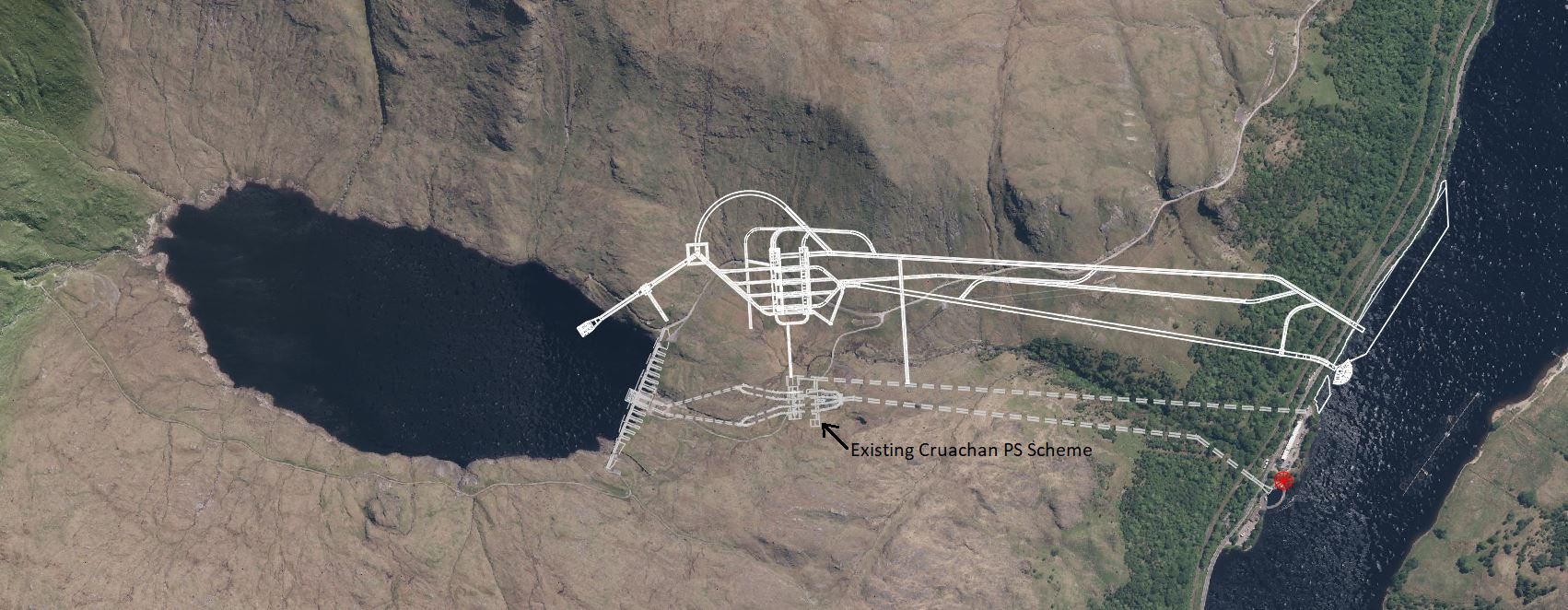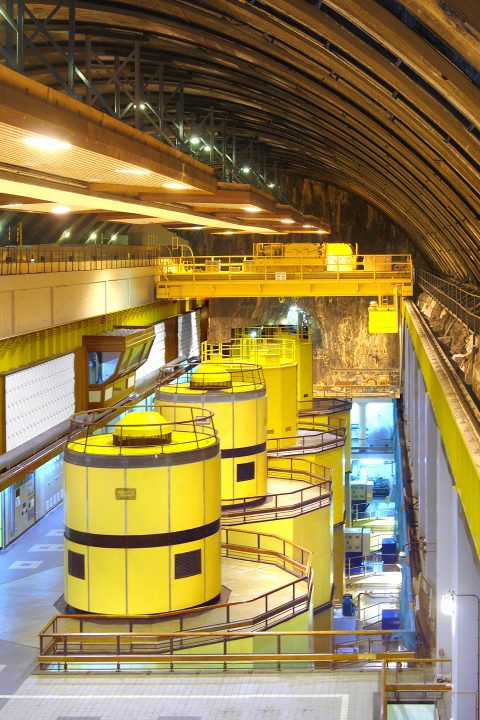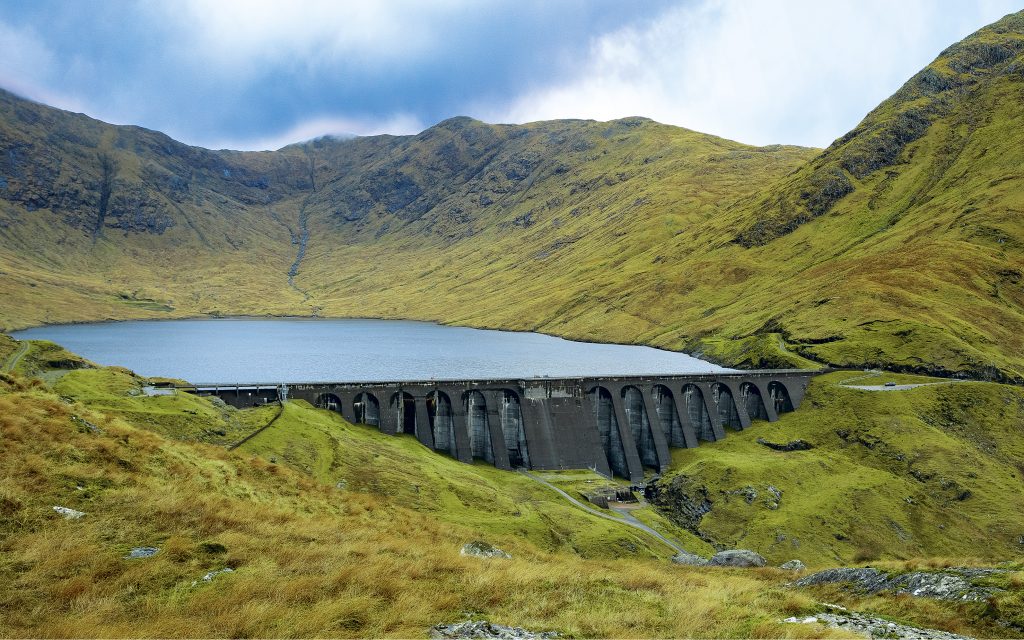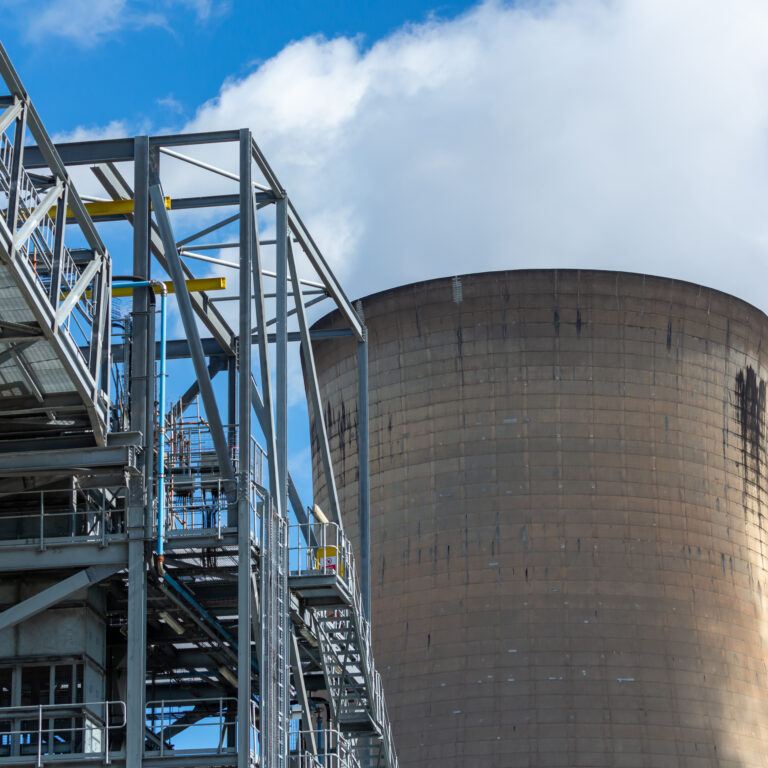- The decision to seek planning permission to expand pumped storage hydro at Cruachan demonstrates Drax’s commitment to Scotland and is a landmark moment in unlocking the vast renewable resources needed in the UK ahead of COP 26 in Glasgow.
- Pumped storage hydro is a critical technology which enables more renewable power and supports Scotland’s electricity system, helping the country towards its target of reaching net zero by 2045 five years before the UK as a whole.
- Work to build Drax’s new pumped storage hydro power station could begin as soon as 2024, removing 1 million tonnes of rock from inside Ben Cruachan and creating hundreds of jobs across rural Scotland.
Renewable energy company Drax Group is kickstarting the planning process to build a new underground pumped storage hydro power station – more than doubling the electricity generating capacity at its iconic Cruachan facility in Scotland.
The project, announced as the UK prepares to host the COP26 climate conference in Glasgow, will support almost 900 jobs in rural areas across Scotland during construction and will provide critical storage capacity needed to support a net zero power system.
The 600MW power station will be located inside Ben Cruachan – Argyll’s highest mountain – and increase the site’s total capacity to 1.04GW. The new power station would be built within a new, hollowed-out cavern which would be large enough to fit Big Ben on its side, to the east of Drax’s existing 440MW pumped storage hydro station. More than a million tonnes of rock would be excavated to create the cavern and other parts of the power station. The existing upper reservoir, which can hold 2.4 billion gallons of water, has the capacity to serve both power stations.

An artist’s impression of Cruachan 2 (top) and the existing Cruachan Power Station (bottom) [click to view/download]
The stored water would then be released back through the turbines to generate power quickly and reliably when demand increases. This will help to cut energy costs by reducing the need for wind farms to be paid to turn off when they are generating excess power. The new station would have the capacity to generate enough power for around a million homes.
Will Gardiner, Drax Group CEO, said:
“This is an exciting and important project which underlines Drax’s commitment to tackling the climate crisis and supporting the energy system as it continues to decarbonise. Our plans to expand Cruachan will unlock more renewable electricity to power homes and businesses across the country, and support hundreds of new jobs in rural Scotland.Drax Group CEO Will Gardiner [Click to view/download]
“Last year, the UK’s lack of energy storage capacity meant wind farms had to be paid to turn off and we lost out on enough renewable power to supply a million homes. We need to stop renewable power from going to waste by storing it, and Drax is ready to move mountains to do just that.”

Turbine hall, Cruachan Power Station [click to view/download]
Brendan O’Hara, Argyll & Bute MP, said:
“I am delighted that Drax is progressing plans to expand the Ben Cruachan site. This will support 900 rural jobs and create a pumped storage facility that will be able to provide enough renewable energy to power a million homes while helping us reach our 2045 net zero target, it is great news for this area and for Scotland.”
Jenni Minto, Argyll & Bute MSP, said:
“Investment in new pumped storage hydro capacity could greatly enhance the flexibility and resilience of the electricity network and help us move towards meeting our ambitious global climate change targets. In the run-up to COP26 in Glasgow, it’s more vital than ever that we come up with innovative solutions to the climate emergency and ensure that future generations to reap the rewards of Scotland’s vast renewable potential.”
In order to deploy this critical technology, Drax must secure consent under Section 36 of the Electricity Act 1989 from Scottish Ministers – a process which takes around one year to complete from the application’s submission.
Alongside a successful Section 36 application, the project will also require an updated policy and market support mechanism from the UK Government. The existing lack of a framework for large-scale, long-duration storage and flexibility technologies means that private investment cannot currently be secured in new pumped storage hydro projects, with no new plants built anywhere in the UK since 1984 despite their critical role in decarbonisation.
The first phase of the Section 36 application process includes public consultation this summer, when people can provide comments on Drax’s proposals for Cruachan via the project website from 1 July. Further consultation events are planned for later in the year, and an application is then expected to be submitted to Scottish Ministers in early 2022.
ENDS
Media contact:
Aidan Kerr
Media Manager (Generation)
E: aidan.kerr@drax.com
T: 07849090368
Editor’s Notes
- The local community can view early stage proposals for the project, ask questions and leave feedback for Drax at a virtual public exhibition which begins on 1 July at the project’s website: cruachanexpansion.com
- With Section 36 consent from the Scottish Government, and an updated revenue stabilisation mechanism from the UK Government, work to build the new pumped storage hydro power station could get underway in 2024, with it becoming operational, supplying flexible power to the grid, in 2030.
- No investment decision has yet been taken and development remains subject to the right regulatory framework with the UK government.
- A recent report by the Renewable Energy Association (REA) highlighted the policy barriers to deploying long-duration energy storage and suggested ways to address these barriers such as through the introduction of an income floor.
- Analysis by pumped storage hydro experts Stantec for Drax shows 876 jobs will be supported directly and indirectly during construction.
- Built on the shores of Loch Awe in Argyll in the 1960s, Cruachan was the first reversible pumped storage hydro system of its scale to be built in the world.
- The upper reservoir on the mountainside can store 11.1 million cubic metres (2.4bn gallons) – that’s enough to fill 4,440 Olympic swimming pools.
- Independent analysis by Lane, Clark and Peacock (LCP) found the UK curtailed 3.6TWh of wind power last year, enough renewable electricity to supply around a million homes.
- A separate independent report by academics from Imperial College London recently found that just 4.5 GW of new pumped storage hydro could save up to £690m per year in energy system costs by 2050.
- Drax’s Scottish operations include hydro facilities in Galloway and Lanark and a biomass-from-waste plant at Daldowie, near Glasgow, along with Cruachan, all of which were acquired at the beginning of 2019.
- Main photo of Cruachan Power Station dam and reservoir [view/download]
- Cruachan 2 video animation [view and download
- in 1:1 (square)] or [view and download in 16:9 (widescreen)]
About Drax
Drax Group’s purpose is to enable a zero carbon, lower cost energy future and in 2019 announced a world-leading ambition to be carbon negative by 2030, using Bioenergy with Carbon Capture and Storage (BECCS) technology.
Its 3,400 employees operate across three principal areas of activity – electricity generation, electricity sales to business customers and compressed wood pellet production and supply to third parties.
Power generation:
Drax owns and operates a portfolio of renewable electricity generation assets in England and Scotland. The assets include the UK’s largest power station, based at Selby, North Yorkshire, which supplies five percent of the country’s electricity needs.
Having converted Drax Power Station to use sustainable biomass instead of coal it has become the UK’s biggest renewable power generator and the largest decarbonisation project in Europe. It is also where Drax is piloting the groundbreaking negative emissions technology BECCS within its CCUS (Carbon Capture Utilisation and Storage) Incubation Area.
Its pumped storage, hydro and energy from waste assets in Scotland include Cruachan Power Station – a flexible pumped storage facility within the hollowed-out mountain Ben Cruachan.
Pellet production and supply:
Drax owns and has interests in 17 pellet mills in the US South and Western Canada which have the capacity to manufacture 4.9 million tonnes of compressed wood pellets (biomass) a year. The pellets are produced using materials sourced from sustainably managed working forests and are supplied to third party customers in Europe and Asia for the generation of renewable power.
Drax’s pellet mills supply around 20% of the biomass used at its own power station in North Yorkshire, England to generate flexible, renewable power for the UK’s homes and businesses.
Customers:
Through its two B2B energy supply brands, Haven Power and Opus Energy, Drax supplies energy to 250,000 businesses across Britain.
For more information visit www.drax.com/uk






















